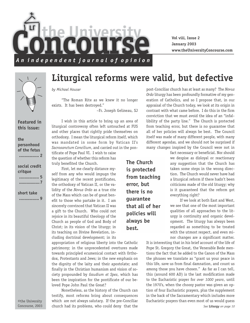The unfeasibility of the Social Credit solution
by Gabriel Martinez
I thoroughly share Oliver Heydorn’s concern for the way in which the debt-finance system oppresses many. Indeed, my research has been on how the irresponsible use of debt created economic chaos in Ecuador. Nevertheless, I think that three main points of criticism can be pointed out from an economist’s perspective: on the nature of fractional reserve banking, on the sufficiency of money supply relative to output, and on Social Credit itself.
First criticism:
First, Mr. Heydorn rightly points out that the banking system creates money by the process of lending. This is the process: Smith takes his $100 to a bank. The bank lends $90 of it out to Jones. Jones takes the $90 and with it he opens a new bank account. Result: you have a total of $190. And so on.
Out of this $190, the original $100 in cash is “true” paper money while the $90 is just credit money. Can a bank charge interest on credit money? Mr. Heydorn argues that it can’t, because credit money is created ex nihilo, without any cost. “The problem with the fractional reserve system is that although it cost the financiers little or nothing to create this new money, they nevertheless insist on interest payments…. [T]he loan is not the product of a cost-generating process.”
We can infer that Mr. Heydorn has never worked at a bank. Indeed, we ought to infer that he has never applied for a car loan or a mortgage. Anyone who has experienced the loan process (on either side) can testify that considerable work and effort goes into making a loan (from identifying a suitable loan candidate, to presenting attractive offices, to persecuting delinquent debtors, etc.)
Moreover, loans are not created ex nihilo. Consider what would happen if Smith withdrew his $100 from the bank. The bank would be forced to call in Jones’s $90 loan. That is, banks need deposits to make loans. Bank employees can testify to the enormous effort that goes into getting people to trust a bank with their money. If Jones gets $90, it is only because Murphy spent endless hours making the bank attractive to depositors (which, incidentally, includes persecuting delinquent debtors.)
People are often happy to receive loans. For instance, students are very happy not to have to pay college tuition right away; they can cover their tuition with loans. Where does that money come from? It comes from the effort of the bank employee and the trust of the depositor. I believe that that effort (and risk-taking) and that trust deserve compensation.
Second criticism:
“Whenever a banker creates a loan and demands to be paid back with interest, he only introduces the principal into the monetary supply; he does not introduce any money to cover the interest payments which may, in the long run, amount to more than the principal itself. The result is that under the current financial set-up there is a chronic lack of money that artificially limits both production and consumption.”
If this were true, then countries with extensive financial systems would be chronically poor and financially strangled, while countries with not much banking would be models of stability and prosperity. The evidence proves the opposite.
The reason that Mr. Heydorn’s argument seems plausible is that we are used to thinking of an economy in fixed, static terms. But the economy is dynamic. Loans are used to finance productive investment, which in turn increases output. The profits of successful investment pay for the interest and the principal. Central Banks, in turn, are permanently in the business of making sure that they print enough bills (which get multiplied by the fractional reserve system) to match the growth of the economy. (Technically, central banks set money-supply growth on the basis the predicted output growth).
Third criticism:
“Instead, a National Credit Office would be charged with the responsibility of ensuring that the money supply is always equal to the productive capacity of the economy, in such a way that purchasing power is sufficient to liquidate supply.
[We’ve already argued that Central Banks regularly do this]
“[This money] would be introduced into the economy debt and interest free. Some of this new money would be used to finance government expenditure on health, education, infrastructure, defense and so on (thus eliminating the need for taxes); some of it would be distributed to each citizen in the form of a social dividend that would guarantee everyone a minimal revenue (thus eliminating destitution and the more severe forms of poverty); and some of it would be used to finance the retail sector while lowering the prices of goods and services for consumers (thus allowing for the recalibration of the whole system and the prevention of inflation.)”
This sounds very nice, but it is based on an equivocation. Money is not wealth, at least not how economists define it. When I say, “Sally has a lot of money,” I may mean lots of real estate, yachts, stock holdings, or cash. But when an economist says, “Sally has a lot of money,” he only means cash or deposits.
Now, let’s say that Mr. Heydorn (and his source, Scottish engineer C.H. Douglas) are thinking of distributing wealth for free. We have such a system in place already, in the form of unemployment benefits and farm subsidies. But to actually plan to sustain the entire economy on the basis of freely (and centrally) produced wealth implies that goods and services can be produced without cost. Reminder: There ain’t no such thing as a free lunch. It also implies the elimination of personal responsibility and the collectivization of economic initiative. Not very distributist-sounding.
Maybe Messrs. Heydorn and Douglas actually meant distributing money for free. Let’s think technically for a bit. Prices are proportional to the ratio of the available money (cash and deposits) divided by the amount of goods and services available. This will become clear if we think that money is used to buy goods and services. Then, if there is more money (cash and deposits), that ratio has to rise: i.e., prices will have to rise.
Imagine financing the government, the citizen, and the retail sector (which is not formed by citizens, I assume) by constant costless, unbacked money creation: the result is economic chaos.
Indeed, this is the experience of many countries that tried to finance government expenditures by monetary creation: Germany, Hungary, Argentina, Brazil, Ecuador… the list goes on. Rapid monetary creation leads to inflation, which (by a familiar economic process, known as the Oliviera-Tanzi effect) leads to reduced government revenues, a higher deficit, and a need for more money cre-ation… Often “hyperinflation” leads to massive social and economic disruption. Think of Nazi Germany following the German hyperinflation; think of Ecuador having to abolish its national currency and replace it with trustworthy, and scarce, American dollars.
In closing, a quote from well-known economist J.K. Galbraith is appropriate:
“Over all history, money has oppressed people in one of two ways: either it has been abundant and very unreliable, or reliable and very scarce.” n
Dr. Martinez teaches economics at AMC.


